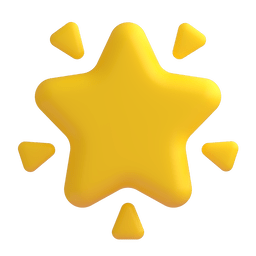To begin with, it is important to note that, this project have been sourced from an exceptional
Three.js JourneyCourse.
👤 Instructed by a proficient and expert educator "Bruno Simon" .
Environment map is a texture that simulates the surrounding environment and is used to create realistic reflections and lighting on 3D objects. It provides a way to make surfaces appear as if they are reflecting the environment around them, even though the environment itself may not be rendered in the scene.
-
Realism :
By simulating reflections and lighting from the environment, objects appear more realistic. -
Performance :
Instead of rendering the full environment, you can use a precomputed environment map to achieve realistic effects, which is computationally cheaper. -
Lighting :
It can be used to create ambient lighting that affects the color and brightness of the objects, enhancing the overall visual quality.
There are different types of environment maps, each with specific characteristics and use cases:
Cube Maps are a type of environment map consisting of six square textures that represent the six faces of a cube. Each face corresponds to one of the six directions (positive X, negative X, positive Y, negative Y, positive Z, negative Z).
- Usage: Commonly used for reflections, skyboxes, and dynamic environment mapping.
- Advantages :
- Realistic Reflections: Provides high-quality reflections for shiny or metallic surfaces.
- Easy Integration: Well-supported in most 3D engines and rendering systems.
- Dynamic Updates: Can be updated dynamically to reflect changes in the environment.
- Disadvantages :
- Memory Usage: Requires six images, which can be memory-intensive.
- Seams: Potential for visible seams where the cube faces meet if not handled properly.
Equirectangular Maps are a single, continuous texture that represents a 360-degree panorama. They map a spherical environment onto a 2D image using an equirectangular projection.
- Usage: Often used for HDRI (High Dynamic Range Imaging) lighting and as a source for creating cube maps.
- Advantages :
- Simplicity: Easier to manage and store compared to six separate images.
- No Seams: No seams, as it is a single continuous image.
- HDRI Support: Frequently used in HDRI for realistic lighting and reflections.
- Disadvantages :
- Distortion: Potential for distortion, especially at the poles.
- Conversion: Sometimes needs to be converted to a cube map for certain applications.
Spherical Harmonics (SH) are a mathematical representation used to approximate complex lighting environments. SH captures the distribution of light over a sphere and is particularly effective for ambient lighting and diffuse reflections.
-
Usage: Common in real-time applications where performance is critical.
-
Advantages :
- Performance: Efficient for real-time rendering with low computational cost.
- Smooth Lighting: Provides smooth and soft lighting effects, ideal for diffuse surfaces.
- Compact Representation: Requires less memory compared to cube maps and equirectangular maps.
-
Disadvantages :
- Low Detail: Not suitable for high-frequency details or sharp reflections.
- Complex Setup: Requires mathematical understanding and implementation.
| Aspect | Cube Maps | Equirectangular Maps | Spherical Harmonics (SH) |
|---|---|---|---|
| Detail | High | High | Low |
| Performance | Moderate | Moderate | High |
| Memory Usage | High (six images) | Moderate (single image) | Low (mathematical coefficients) |
| Ease of Use | Widely supported, but more complex | Simple and straightforward | Complex setup, but efficient usage |
| Best For | Sharp reflections, dynamic updates | HDRI lighting, seamless panoramas | Ambient lighting, diffuse surfaces |
Blender is often used in conjunction with three.js (a popular JavaScript library for 3D graphics on the web) due to several key reasons:
-
Reflective Surfaces :
Use environment maps on materials that require reflections, such as metals, water, glass, and polished surfaces. -
Ambient Lighting :
Use them to create ambient lighting that enhances the scene's realism by providing indirect light. -
Skylighting :
To simulate the effect of the sky and surroundings on the objects in your scene. -
Indoor Scenes :
They can be used to reflect the interior environment for objects like furniture, glossy floors, and decorative items.
Important
- Enhanced Realism :
Environment maps provide realistic reflections and lighting, which are crucial for high-quality visual effects.- Efficient Rendering :
Precomputed environment maps reduce the computational load compared to real-time environment rendering.- Versatility :
They can be used in various scenarios, from outdoor scenes with sky reflections to indoor environments with complex lighting setups.- Improved Visuals :
They contribute to more visually appealing and immersive scenes, enhancing the overall user experience.
![]() Feel free to delve into the code as it has been written in a straightforward manner for easy understanding.
Feel free to delve into the code as it has been written in a straightforward manner for easy understanding.
Give it a go in real-time and give me a Star  Environment Map
Environment Map
![]() Real time environment map rendering!
Real time environment map rendering!
